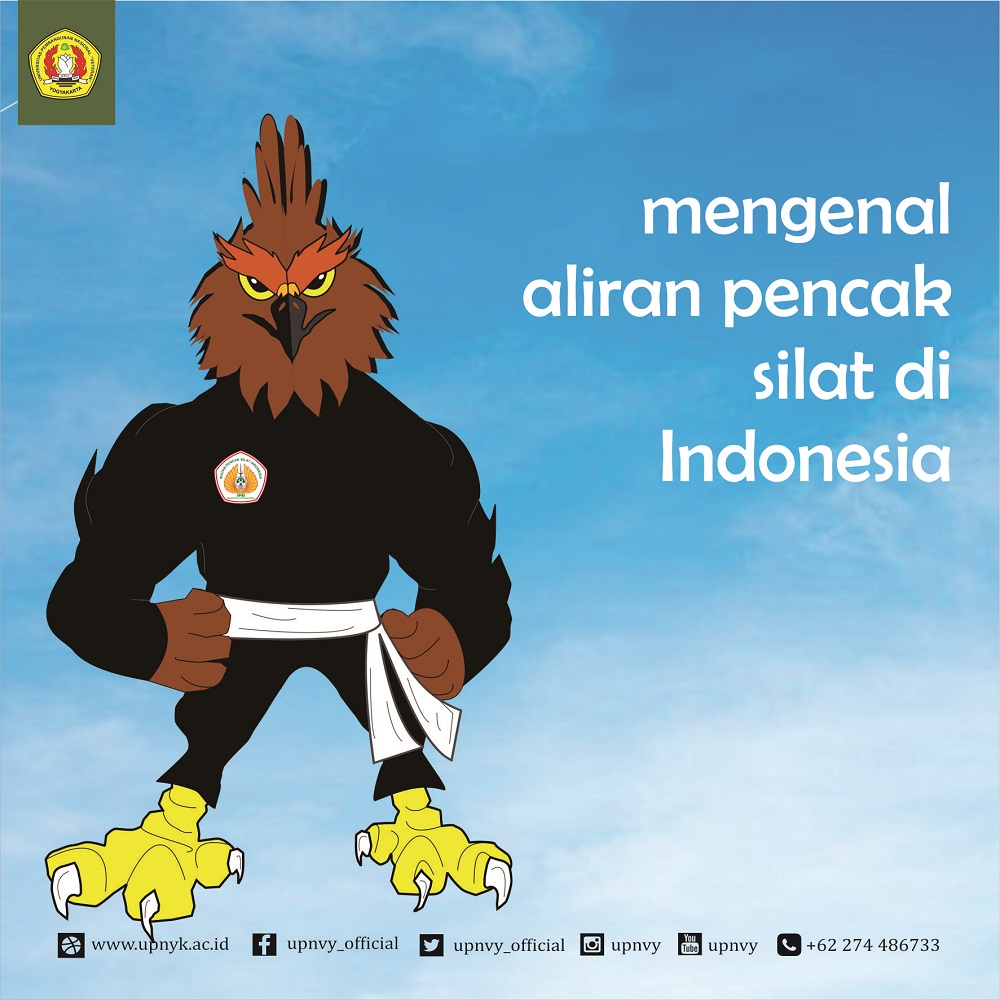SLEMAN - Pencak Silat is an Asian martial art rooted in Malay culture. This martial art is widely known in Indonesia, Malaysia, Brunei, Singapore, the Philippines and Thailand. Over time, the Malay Archipelago's heritage of martial arts began to develop in Vietnam. This is thanks to the role of the Indonesian trainers.
At the national level sports through games and sports, pencak silat becomes one of the unifying tools, even to scent the name of the nation, and become the nation's identity. This sport has been competed on an international scale.
There are many sects of pencak silat In Indonesia. It shows the cultural richness of the people in Indonesia with the values ??in them. Here are some martial arts.
1. Persaudaraan Setia Hati Terate (PSHT)
The Setia Hati Terate Brotherhood (PSHT) establihed in Indonesia before Indonesia's independence. This martial arts school was founded in 1903 by Ki Ngabehi Soeromihardjo or known as Eyang Suro by the name of Djojo Gendilo Tjipto. Then, the name was changed to Persaudaraan Setia Hati in 1917.
The name Setia Hati means a single unity in the heart and mind of people oriented to God. Meanwhile, the meaning of Terate or lotus flower is a type of beauty and majesty of flowers that can survive anywhere.
PSHT prioritizes the brotherhood between humans and also the combination of spiritual teachings (mysticism) with the martial arts movement.
2. Pencak Silat Pagar Nusa
Since a long time ago in the Nahdlatul Ulama (NU) boarding school, there have been many silat styles. This diversity led to the formation of Nusa Fence as a container for the martial arts associations under NU in 1986. Among the trhem, there are the names of Nusa Gasmi Fence, Nusa Batara Perkasa Fence, Padar Nusa Satria Perkasa Sejati (Saperti), and so forth.
The name Pagar Nusa is an abbreviation of Pagar NU and Bangsa.
3. Pencak Silat Perisai Diri
Officially, Perisai Diri was established on July 2, 1955 in Surabaya by RM Soebandiman Dirdjoatmodjo, the son of the royal court of the Paku Alam Palace. Before formally establishing Perisai Diri, he practiced martial arts in the Taman Siswa College environment at the request of Ki Hajar Dewantara who was also his uncle.
The technique in this silat contains approximately 156 martial arts elements from various regions in Indonesia. They were also added to the Shaolin (Siauw Liem) sects from China which the founder had previously studied.
The fighter is taught effective and efficient martial techniques, both bare hands and with weapons. The practical method in Perisai Diri is an avoidance attack exercise which produces the motto "Clever martial arts without Injury".
4. Pencak Silat Merpati Putih
Merpati Putih is a martial arts which is done in bare hands or without weapons and tools. It is an acronym for "Mersudi Patitising Tindak Pusakane Titising Hening". In Indonesian, it means "searching until you get the truth with calmness" so that it is hoped that a Merpati Putih member will harmonize his heart and mind in all his actions.
In addition, Merpati Putih has a motto: "My contribution is worthless, but my sincerity is real".
It was initially taught specifically to the Special Forces Command (Kopassus) in each ABRI unit. However, this type of pencak silat continues to grow and is widely studied by Indonesian people.
5. Silat Tapak Suci Putera Muhammadiyah
Tapak Suci is a martial art under the auspices of Muhammadiyah. Tapak Suci is an autonomous organization of the Persyarikatan Muhammadiyah which is based on Islamic creed and always teaches the guidance of Islamic teachings by heeding its laws and carrying out its worship.
All members or cadres of Tapak Suci who intend to truly learn martial arts must be Muslim and be willing to become members of Muhammadiyah. These requirements are in accordance with the purpose of Tapak Suci which is to gather members of Muhammadiyah to learn the science of pencak silat that is clean from the science of shirk apostasy.
While getting to know and memorize the movements of Tapak Suci, the cadres are also fostered about strengthening the creed, morals (morality) in association, mental endurance, and also leadership.
6. Pencak Silat Cimande
Pencak silat Cimande is a martial art developed from Kampung Cimande, Caringin, Bogor Regency. It is believed to have been developed by a figure named Abah Khaer.
It is a martial art that contains the values, norms and behavior that are held in high esteem and inherited by Cimande's ancestors. In the life of the Cimande pencak silat family, there is Taleq which is a code of ethics that must be obeyed and adhered to by the members. The contents of the Taleq include ; must obey Allah and His Messenger; don't fight against mothers and fathers and old people; do not fight against the teacher and queen (government), etc.
Among the most popular forms of pencak silat Cimande are the forms of pamacan or movements such as the tiger. (wwj / PR)
Jl. SWK 104 (Lingkar Utara), Condongcatur, Yogyakarta 55283 (Kampus Pusat)
Jl. Babarsari 2 Yogyakarta 55281(Kampus Unit II) | Telp. +62 274 486733



